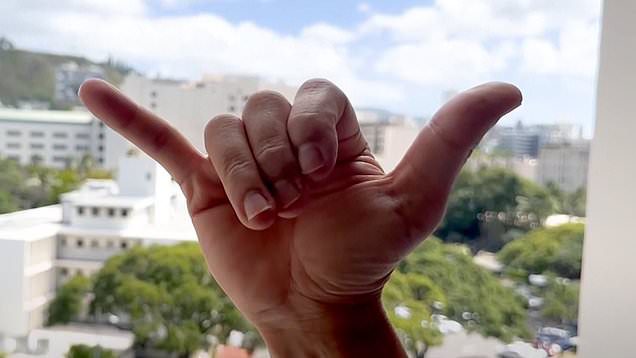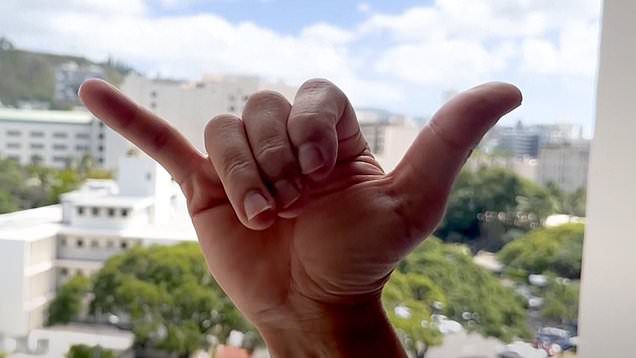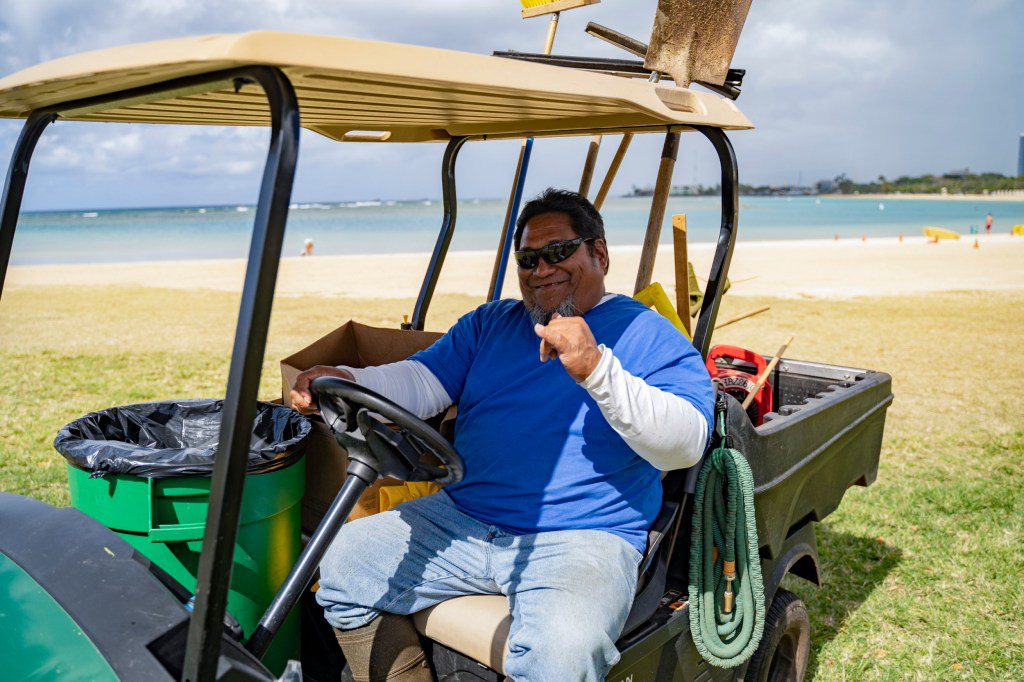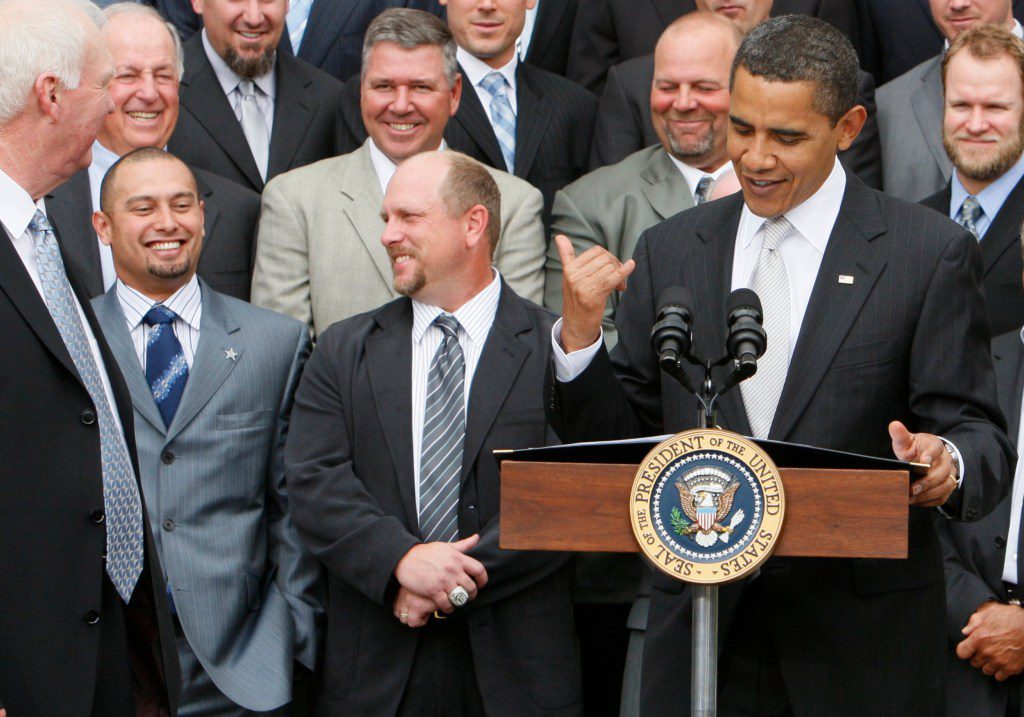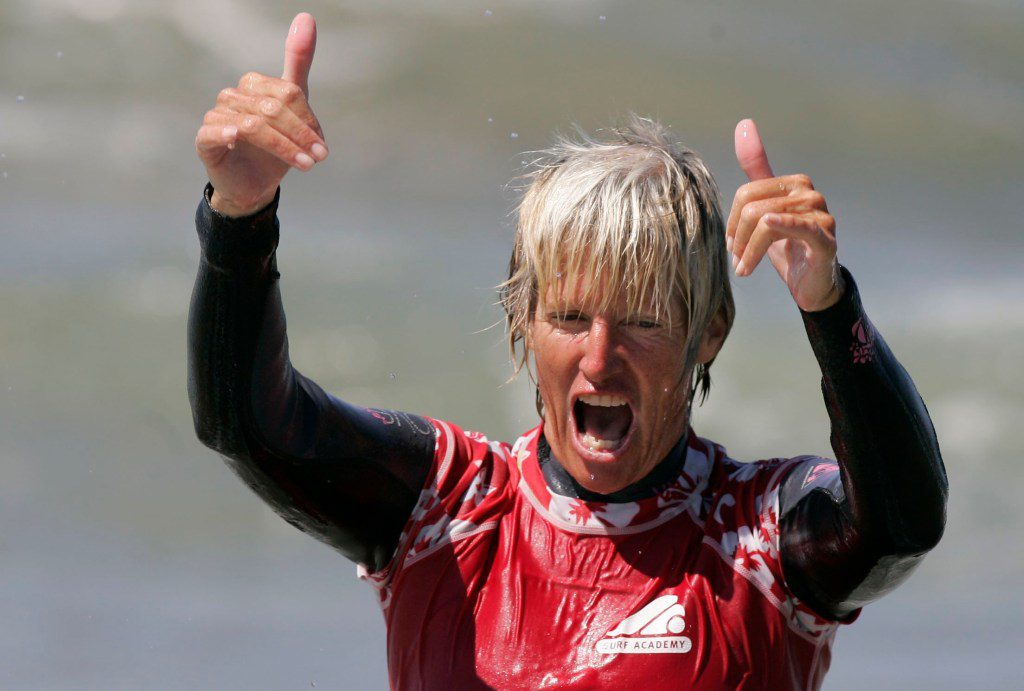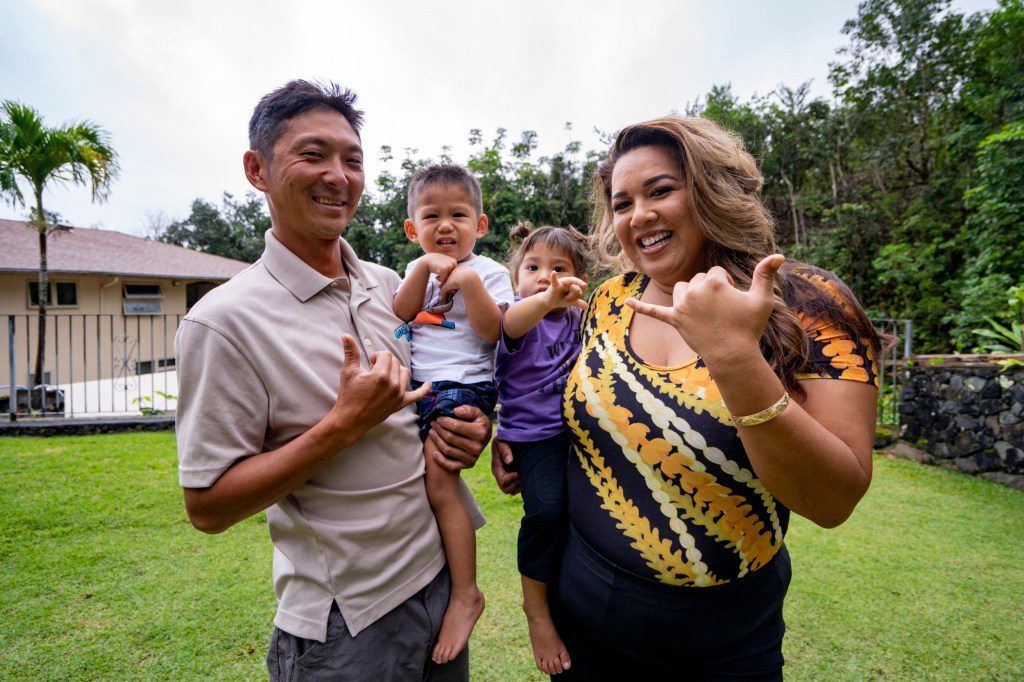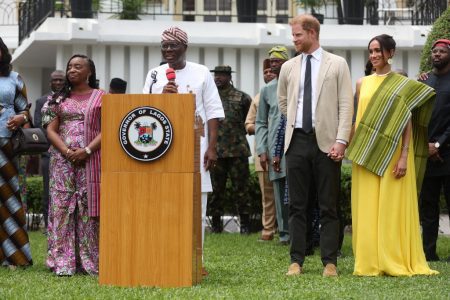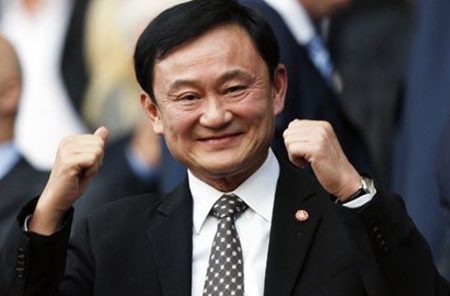For many years, the ‘shaka’ hand gesture has been a big part of surfer culture, and can be seen on beaches and boardwalks around the world.
The gesture, which involves making a fist and extending the thumb and pinky finger, has long been called the ‘hang loose’ sign among surfers.
But well before it became associated with catching waves and using the word ‘dude’ a lot, the shaka was a common way of saying hello and goodbye, expressing gratitude, and showing warmth among native Hawaiians, who used different variations to convey a range of positive feelings.
Now legislators on the island are working to officially recognize the shaka by introducing a pair of bills that would make it the state’s official gesture and acknowledge Hawaii as its place of origin.
Senator Glenn Wakai, who proposed the Senate version, said he cannot see any opposition to the measure and expects it to pass without difficulty.
According to the House bill, the shaka ‘generally consists of extending the thumb and smallest finger while holding the three middle fingers curled, and gesturing in salutation while presenting the front or back of the hand; the wrist may be rotated back and forth for emphasis.’
However, in practice, the shaka has a lot more meaning.
Some say the only rule is an extended pinky and thumb. Others say shaking the shaka is not allowed.
People from beach or rural communities usually don’t shake their shakas. But it is common in the capital city of Honolulu.
The shaka expresses friendliness and warmth — the aloha spirit. Some hold it low when greeting a child, and some like to flash two shakas. It can convey greetings, gratitude or assent, or it can ease tension. It was particularly useful in the early days of the COVID-19 pandemic, when people were hesitant to shake hands.
According to local stories, the shaka’s origin goes back to a Native Hawaiian fisherman named Hāmana Kalili, who lived on Oahu’s North Shore in the early 1900s.
Kalili reportedly lost three fingers in a sugar mill accident and later worked as a train guard. Kids looking for a free ride would then jump on the train and mimic his signature hand gesture to other train-jumpers, giving them the all-clear.
Other residents later adopted Kalili’s three-finger-less wave more broadly, according to family lore, and it spread, possibly fueled by the waves of tourists that began arriving after World War II.
Mailani Makaʻīnaʻi, Kalili’s great-great-granddaughter, now wants the bills amended to include his name- something lawmakers reportedly are considering.
‘I love the compassion part of it, you know, where, “Oh, okay, he doesn’t have all three fingers. So, I’m going to say hi the way he’s saying hi,”’ Makaʻīnai said. ‘It’s the idea that … I’m like you and you’re like me.’
A bronze statue of Kalili, with his right arm out in a shaka, is shown at the Polynesian Cultural Center in Laie.
There are different ideas about how the term ‘shaka’ became linked to the hand signal, with some proposing that the name originated from Japan’s Shaka Buddha.
.





